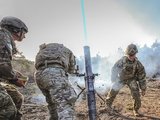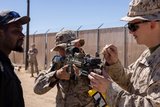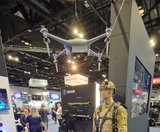Cubic tailors mortar simulator for the US Army
The company’s mortar trainer received improvements based on soldier’s feedback.
A team from BAE Systems in the UK and the Australian Defence Science and Technology Organisation (DSTO) has completed a major structural testing programme on a specially adapted Hawk 127 trainer jet, to achieve the equivalent of 50,000 flying hours (five times its safety clearance for the Royal Australian Air Force - RAAF).
‘This a major milestone for the Hawk programme which proves there is many years more life left in the 650 aircraft we have training pilots across the globe every day,’ said Mike Swales, head of international markets at BAE Systems.
The airframe was subjected to and tested on the range of loads it would experience in actual flight, with durability tests carried out at the DSTO facility in Melbourne to simulate real-life fleet usage based on projected operational requirements.
This marked the culmination of a 14-year programme to extend the structural integrity of the Hawk airframe far beyond its intended life.
‘The airframe will now be dismantled with components undergoing a further two-year period of detailed inspections,’ BAE Systems stated on 10 August.
Shephard Defence Insight notes that the RAAF fleet of 33 Hawk 127s was upgraded from 2014 to 2019, involving local firms and international companies such as CAE and Cubic. Improvements included a simulated radar, EW, digital mapping, a ground proximity warning system and traffic collision avoidance.
Despite this upgrade and the latest achievement, Australia in June officially began the search to replace the Hawk 127, by issuing an RfI for a future lead-in fighter training system.
As part of our promise to deliver comprehensive coverage to our Defence Insight and Premium News subscribers, our curated defence news content provides the latest industry updates, contract awards and programme milestones.

The company’s mortar trainer received improvements based on soldier’s feedback.

The company will operate in two new locations in the coming years to better support US services.

This type of tool provides more realistic training easing the incorporation of new scenarios that accurately represent the threats of the battlefield.

The Engineering Corps has been conducting individual instruction using FLAIM Systems’ Sweeper and should start collective deployments in 2025.

The next-generation platform is motion-compatible and can be used in OTW and NVG applications.

The system can be used to prepare soldiers for both drone offensive operations and CUAS missions.